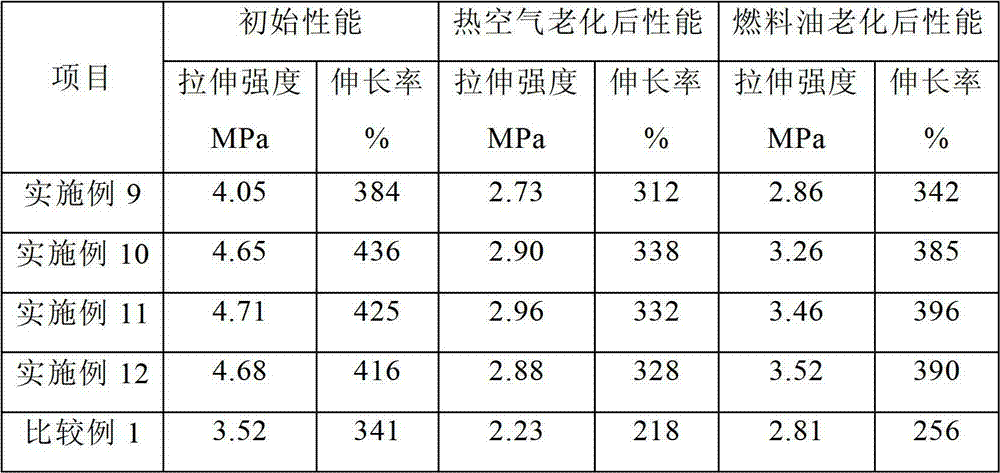Synthesis method of 2-hydroxyl-3-chloropropyl-2'-chloroethyl ether, and application thereof
A technology of chloroethyl ether and chloropropyl, which is applied in the field of synthesis of 2-hydroxy-3-chloropropyl-2'-chloroethyl ether, can solve the problem of material elongation decrease and thermal air aging resistance change Poor problems, to achieve the effect of the best mechanical properties and fuel resistance
- Summary
- Abstract
- Description
- Claims
- Application Information
AI Technical Summary
Problems solved by technology
Method used
Image
Examples
Embodiment 1
[0023] Into a 1L three-neck flask with stirring, add 606g of 2-chloroethanol (industrial product, purity 99%) and 2g of tin tetrachloride pentahydrate (analytically pure, 99%) respectively, and heat up to 45°C. 173 g of epichlorohydrin (industrial product, purity: 99.9%) was slowly added dropwise over the course of 1 hour, and then reacted at 70° C. for 4 hours. Afterwards, rectification under reduced pressure was carried out, and fractions at 114°C to 117°C (1.33kPa) were collected to obtain 226g of 2-hydroxy-3-chloropropyl-2'-chloroethyl ether (chromatographic method, purity 98.1%).
Embodiment 2
[0025] In a 1L three-necked flask with stirring, 606 g of 2-chloroethanol (industrial product, purity 99%), boron trifluoride etherate complex (chemically pure, BF 3 46.8% to 47.8%) 0.74g, heated to 45°C, slowly added 173g of epichlorohydrin (industrial product, purity 99.9%) dropwise in 1 to 1.5 hours, and then maintained at 80°C for 5 hours. Afterwards, rectification under reduced pressure was carried out, and fractions at 114°C to 117°C (1.33kPa) were collected to obtain 251 g of 2-hydroxy-3-chloropropyl-2'-chloroethyl ether (chromatographic method, purity 98.3%).
Embodiment 3
[0027] In a 1L three-necked flask with stirring, 606 g of 2-chloroethanol (industrial product, purity 99%), boron trifluoride etherate complex (chemically pure, BF 3 46.8% to 47.8%) 1.5g, heated to 45°C, slowly added 173g of epichlorohydrin (industrial product, purity 99.9%) dropwise in 1 to 1.5 hours, and then maintained at 60°C for 4 hours. Afterwards, rectification under reduced pressure was carried out, and fractions at 114°C to 117°C (1.33kPa) were collected to obtain 259g of 2-hydroxy-3-chloropropyl-2'-chloroethyl ether (chromatographic method, purity 98.5%).
PUM
| Property | Measurement | Unit |
|---|---|---|
| boiling point | aaaaa | aaaaa |
| quality score | aaaaa | aaaaa |
Abstract
Description
Claims
Application Information
 Login to View More
Login to View More - R&D
- Intellectual Property
- Life Sciences
- Materials
- Tech Scout
- Unparalleled Data Quality
- Higher Quality Content
- 60% Fewer Hallucinations
Browse by: Latest US Patents, China's latest patents, Technical Efficacy Thesaurus, Application Domain, Technology Topic, Popular Technical Reports.
© 2025 PatSnap. All rights reserved.Legal|Privacy policy|Modern Slavery Act Transparency Statement|Sitemap|About US| Contact US: help@patsnap.com


